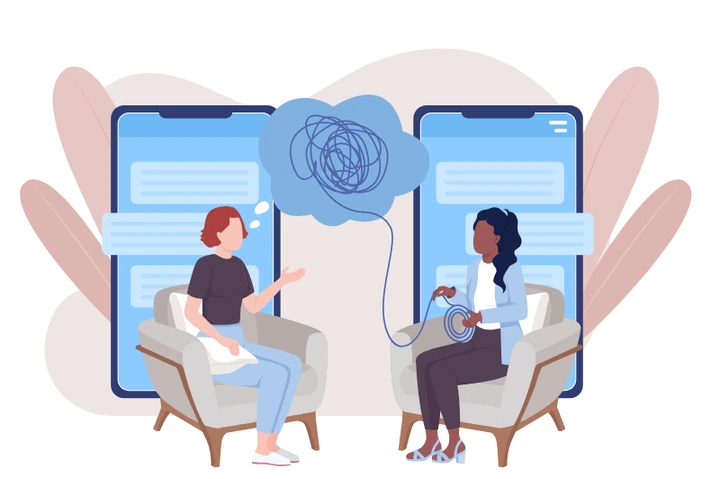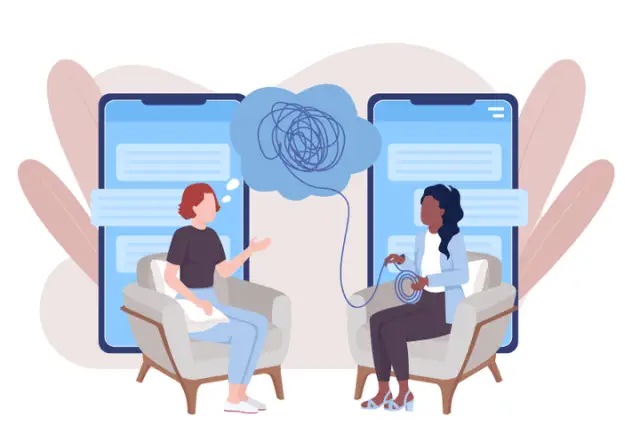
View pictures in App save up to 80% data.
Molly Peck
Nowadays, the possibilities of what can be accomplished online are nearly limitless. From purchasing everything from food items to formal dresses, to enrolling in college-level statistics courses, the internet has transformed how we live. You can also easily stay in touch with loved ones across the globe in real-time. With millions of individuals working from home, a 2023 survey by the Pew Research Center revealed that 10% of adults in the U.S. in committed relationships—rising to 20% for those under 30—met through online platforms.
Psychotherapy, too, has moved into the virtual realm with platforms like BetterHelp, Brightside, and Talkspace serving up new ways to get help with mental health concerns. In fact, a recent study found that more than half of all counseling sessions take place over the phone or online.
A Demolishing Force Against Obstacles
That makes perfect sense. Historically, traditional face-to-face therapy was not an option for numerous individuals. For many, it was a scheduling conflict: in-person therapists typically operate within standard business hours, making it difficult for people to take time off work for appointments. Additionally, some lacked the financial means for childcare or eldercare during their sessions. Others face physical or mental health challenges that confine them to their homes; for those grappling with depression or social anxiety, the thought of going out to visit a new therapist can feel overwhelmingly intimidating.
For others, the issue was simply that there weren’t any available counselors within a reasonable distance. Many people, especially those in rural areas, live in “therapy deserts,” where the list of therapy seekers far exceeds the number of local mental health professionals. Case in point: A recent survey from Verywell Mind found almost 30% of would-be clients encountered difficulty finding a practitioner who was taking new patients in their area.
Online platforms have virtually removed any obstacles for individuals equipped with a smartphone and a reliable internet connection.
Say goodbye to the headaches of battling through rush hour traffic or dealing with public transit seat hogs on your way to see a therapist. No longer will you need to hunt for parking or flip through outdated magazines while sitting in an uncomfortable waiting room chair.
Clients seeking online therapy can easily choose a cozy location in their home, workplace, or any place with internet connectivity to connect and log in.
Additionally, numerous therapists available on online platforms provide more adaptable scheduling options for live sessions, including evenings and weekends. Therapists, being human as well, benefit from not having to commute to an office, which saves them both time and stress, mirroring the advantages experienced by their clients.
These digital platforms serve as a true refuge for individuals living in areas with limited access to therapy. Since counselors are typically licensed on a state level, clients are not confined to finding practitioners within a reasonable travel distance. For instance, a farmer located 30 miles from Nowhere, Ohio, can easily reach out to a therapist based in Cincinnati. Additionally, those with busy, travel-heavy lives can continue their sessions from anywhere, whether it’s a hotel room or even a tent (provided they have a good signal). This means no more last-minute rush to rearrange appointments or incurring cancellation charges.
The entirely virtual nature of online therapy provides a level of privacy for individuals who may prefer to keep their treatment confidential from family and friends for various reasons.
One significant obstacle that has long deterred potential therapy seekers is the expense involved. Conventional psychotherapy can be quite pricey, with fees for licensed therapists generally ranging from $100 to $250 for a 45-minute session, and potentially higher based on the therapist's qualifications. Furthermore, many health insurance plans offer minimal support for mental health services. If coverage is available, it often includes a restricted number of sessions—sometimes as few as 10 annually—and typically only covers a fraction of the overall cost. Additionally, this coverage usually applies only to in-network providers, many of whom may have lengthy waiting lists.
Some online therapy platforms like Talkiatry, Monument Health, and Brightside do accept some insurance plans. But because online therapists don’t have many of the typical overhead costs of traditional in-person therapists, even without insurance many online therapy plans can end up being cheaper anyway. At BetterHelp, for instance, plans range from $65 to $100 per week, and discount codes and financial assistance can shave costs even more. Plus, most online platforms will accept health savings account cards as a payment method.
Is Online Therapy Truly Effective?
Indeed, online therapy seems to be highly effective and has received support from the American Psychological Association. While it may not be suitable for every circumstance, studies indicate that in numerous instances, the effectiveness of online therapy is comparable to that of traditional face-to-face counseling.
A recent study revealed that online cognitive behavioral therapy for conditions such as panic disorder, social anxiety disorder, and generalized anxiety disorder is as effective as traditional in-person therapy. Additionally, an analysis encompassing over 60 studies determined that for the majority of individuals dealing with anxiety, depression, and post-traumatic stress disorder, virtual therapy sessions yield results comparable to face-to-face interactions with therapists.
Researchers in another study found that 95% of participants with bipolar disorder reported an increased quality of life after using online therapy. And in yet another survey, researchers found that participants in couples counseling actually preferred online therapy via videoconferencing to in-person sessions.
What’s more, many online therapy platforms include additional features that clients appreciate. For instance, some online therapy platforms, including BetterHelp and Brightside, allow clients to send messages to their therapists at any time between live sessions, and the therapist will respond.
Numerous platforms provide group sessions, allowing clients to engage in conversations with others facing comparable mental health issues such as grief or addiction. Additionally, some websites offer clients the opportunity to access online journals or supplementary worksheets.
Perhaps what makes online therapy most effective is simply that the convenience and ease of use mean that people who might not otherwise pursue traditional therapy are actually using it.
If you're already swiping right in search of your soulmate, it might be the perfect moment to explore online therapy as well.
*This content is for informational purposes only and is not intended as medical advice, nor does it replace professional medical expertise or treatment. If you have any concerns or questions about your health, always consult with a physician or other healthcare professional.










